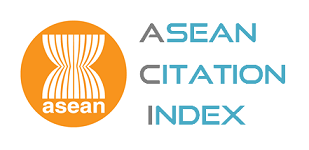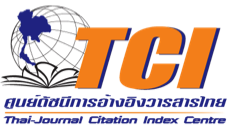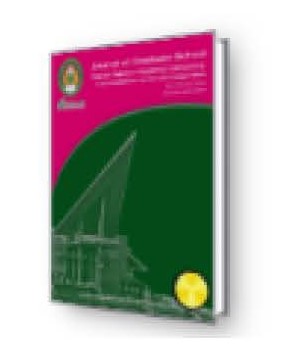แนวทางการพัฒนาการจัดเก็บภาษีน้ำมันในเขตองค์การบริหารส่วนจังหวัดสกลนคร
Abstract
แนวทางการพัฒนาการจัดเก็บภาษีน้ำมันในเขตองค์การบริหารส่วนจังหวัดสกลนคร
A WAY TO DEVELOP THE GASOLINE TAX COLLECTION IN THE SAKON NAKHON PROVINCIAL ADMINISTRATION ORGANIZATION AREA
บทคัดย่อ
การวิจัยครั้งนี้มีจุดมุ่งหมาย 1) เพื่อศึกษาระดับการจัดเก็บภาษีน้ำมันในเขตองค์การบริหารส่วนจังหวัดสกลนคร 2) เพื่อเปรียบเทียบการจัดเก็บภาษีน้ำมันในเขตองค์การบริหารส่วนจังหวัดสกลนคร ตามคุณลักษณะส่วนบุคคล 3) เพื่อศึกษาแนวทางในการพัฒนาการจัดเก็บภาษีน้ำมันขององค์การบริหารส่วนจังหวัดสกลนคร ประชากร ได้แก่ ผู้ประกอบการค้าน้ำมันในเขตจังหวัดสกลนคร จำนวนทั้งสิ้น 315 ราย และได้กำหนดขนาดของกลุ่มตัวอย่าง จำนวน 176 ราย โดยใช้สูตรการคำนวณของ ทาโร่ ยามาแน่ และพนักงาน ผู้จัดเก็บภาษีจากการค้าน้ำมันขององค์การบริหารส่วนจังหวัดสกลนคร จำนวน 8 ราย ผู้วิจัยเจาะจงที่จะใช้บุคลากรทั้งหมดเป็นหน่วยวิเคราะห์ จึงไม่ได้มีการสุ่มตัวอย่าง เครื่องมือที่ใช้ในการวิจัยเป็นแบบสอบถาม แบบประมาณค่า มีค่าความเชื่อมั่นของแบบสอบถามเท่ากับ .93 สถิติที่ใช้ในการวิเคราะห์ข้อมูล คือ ค่าความถี่ ค่าร้อยละ ค่าเฉลี่ย ค่าเบี่ยงเบนมาตรฐาน t-test F-test ชนิดการวิเคราะห์ความแปรปรวนทางเดียว Least Significant Difference (LSD)
ผลการวิจัย พบว่า
1. การจัดเก็บภาษีน้ำมันในเขตองค์การบริหารส่วนจังหวัดสกลนคร โดยรวมอยู่ในระดับมาก โดยเรียงอันดับจากมากไปหาน้อย 3 อันดับแรก ได้แก่ ด้านพนักงานผู้จัดเก็บภาษี รองลงมาด้านบรรยากาศที่เอื้ออำนวย และด้านคุณลักษณะของกฎหมายภาษี
2. ผู้ประกอบการค้าน้ำมันในเขตองค์การบริหารส่วนจังหวัดสกลนครที่มีเพศและรายได้ต่างกันมีการจัดเก็บภาษีน้ำมันแตกต่างกันอย่างมีนัยสำคัญทางสถิติที่ระดับ .05 และผู้ประกอบการค้าน้ำมันที่มีระดับการศึกษา, สถานภาพ และระยะเวลาในการประกอบกิจการค้าน้ำมันต่างกัน มีการจัดเก็บภาษีน้ำมันไม่แตกต่างกัน
3. การจัดเก็บภาษีน้ำมันในเขตองค์การบริหารส่วนจังหวัดสกลนคร ที่ควรนำไปศึกษาหาแนวทางการพัฒนาการจัดเก็บภาษีน้ำมัน ในเขตองค์การบริหารส่วนจังหวัดสกลนคร มีจำนวน 2 ด้าน คือ ด้านคุณลักษณะของกฎหมายภาษี และด้านโครงสร้างภาษี
ABSTRACT
The purpose of this study aimed to: 1) investigate a way to develop the gasoline tax collection in the Sakon Nakhon Provincial Administration Organization area, 2) compare the gasoline tax collection in the area based on personal background, and 3) examine a way to develop the gasoline tax collection of the Sakon Nakhon Provincial Administration Organization. The population was a number of 315 who sold gasoline in the Sakon Nakhon province area. The sample size of 176 people was determined using Taro Yamane’s formula for calculation. Eight officers of Sakon Nakhon Provincial Administration Organization engaged in gasoline selling tax collection were also research participants. This author intended to use all the personnel as a unit for analysis. So sampling was not conducted. The instrument used for collecting data was a questionnaire. Statistics used to analyze data were frequency, percentage, mean, standard deviation, t –test, one-way ANOVA and the LSD (least significant difference) method.
The findings disclosed as follows:
1. Tax collection in the Sakon Nakhon Provincial Administration Organization area as a whole was at high level. As arranged from higher to lower ranks, the firsts 3 aspects were those of officers who collected tax, climate being conducive, and characteristic of tax law.
2. The gasoline sellers in the Sakon Nakhon Provincial Administration Organization area whose sexes and incomes were different had a significantly different opinion on the gasoline tax collection at the .05 level, whereas the gasoline sellers whose educational attainments, statuses, and lengths of time in doing a gasoline selling business each were different had no different opinion on the gasoline tax collection.
3. The gasoline tax collection in the Sakon Nakhon Provincial Administration Organization area which should be brought to examine a way to develop the gasoline tax collection in the Area comprised 2 aspects, namely characteristic of tax law and tax structure.
Downloads
How to Cite
Issue
Section
License
บทความทุกบทความที่ตีพิมพ์ในวารสารบัณฑิตศึกษา มหาวิทยาลัยราชภัฏสกลนคร ถือว่าเป็นลิขสิทธิ์ของบัณฑิตวิทยาลัย มหาวิทยาลัยราชภัฏสกลนคร









